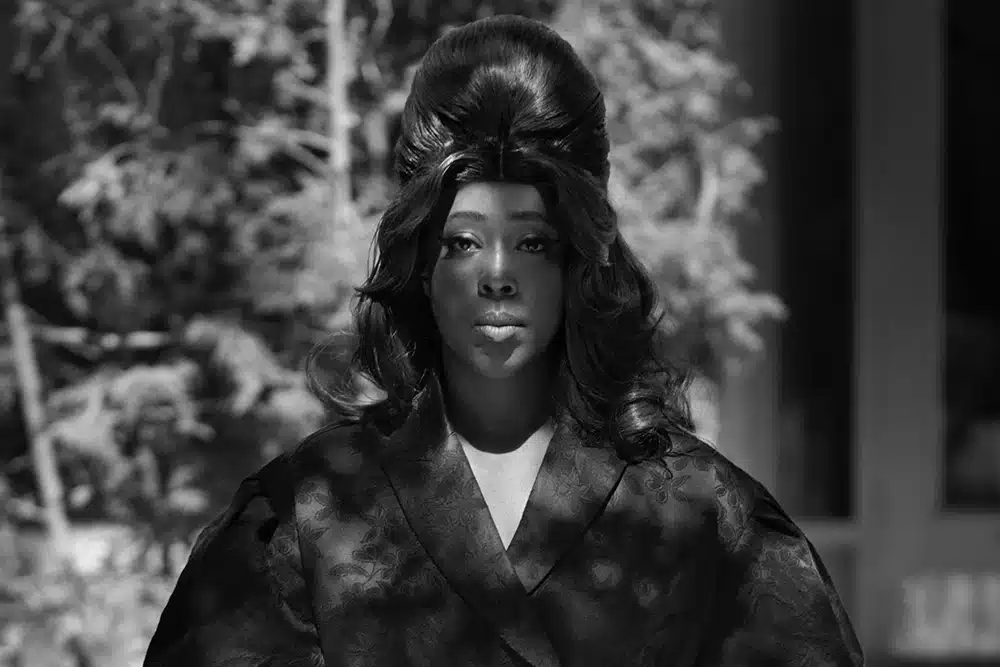
Cold Specks’ new LP works as a concept album, diving across the spectrum of human emotions: grief, sorrow, euphoria, energy, anger, lust, and acceptance.
 Light for the Midnight Cold Specks Mute 9 April 2025
Light for the Midnight Cold Specks Mute 9 April 2025
Canadian vocalist Cold Specks is returning to the spotlight after a seven-year hiatus, and Light for the Midnight showcases an artist thirsty for the spotlight. Compared to I Predict a Graceful Expulsion and Neuroplasticity, Cold Specks‘ newest release is mournful, suggesting that the climate has utterly changed the artist in the intervening years. “I have been cheap dreaming, cheap dreaming,” she ruefully sings; “Dreaming away.”
The sadness hangs over Light for the Midnight, a record coated in self-doubt, yearning, resolution, and re-imagining. As albums go, Cold Specks’ fourth one jumps from funereal slow waltzes (“Lovely Little Bones”, “Curse Away”) to speedier, solipsistic-laden gospel (“How It Feels”, “Venus in Pisces”). Adele percussionist Seb Rochford offers touches of drum precision, amping up the tension on “Cold Goodbye” by speeding/slowing through the frenzy. “I never believed in you,” cries the vocalist on “Cold Goodbye”, her voice breaking under the weight of the words.

Cold Specks bears much in common with Irish starlet Imelda May. Both sing from the gut, embracing their femininity in an industry typically dominated by male counterparts, showcasing a raw nerve that stems from another perspective in life. Heartbreak is a feature in May’s oeuvre, as well as Cold Specks’ fourth and most biting album. With “Endlessly”, Cold Specks hits a guttural low during the chorus, commonly heard in May’s balladry a la “Just One Kiss”.
“Lovely Little Bones”, complete with pictures of a burning world and a woman motionless in time, recalls Peter Jackson’s macabre film The Lovely Bones, suggesting that the darkness surrounding the protagonists is connected to a darker force. The singer wails over a chiming guitar, the instrumentation acting like a drone for a person experiencing tremendous loss.”It just creeps under my skin,” she intones, breathing into the microphone as the song fades out.
“Curse Away” is embellished with strings, situating the narrators’ impasse with strident force. A brass accompaniment gently undulates the melody; a fable of curses, chaos, and forgiveness. Although she insists she “never needed a hand to hold”, the backdrop of vibrating noises suggests another truth.
Closing number “Closer” dials the clock back to the 1960s, proffering a crispy number in the school of Dusty Springfield, closing the record out on a jaunty, jolly note. Out of despair, a ray of light shines on the listener. Schematically, Light for the Midnight is built from the ground up; Adrian Utley’s pulsating guitar hook guides the convoy of strings from opening to emotive final notes.
Like Simon & Garfunkel with their 1968 opus Bookends, Light for the Midnight delves into the fractured human psyche, but balances it with levity, luscious musicianship, and three jocular sing-along anthems. Wisely, one of them is “Closer”, which seals the record with a glimmer of hope, much like Paul Simon did on Bookends with “At the Zoo”. Music needs contrast to deliver the searing arias that cement the work. Shorn of “Closer”, “How It Feels” and “Venus in Pisces”, the record would be a much dirtier place for the audience to inhabit.
Similarly, Light for the Midnight works as a concept album, diving across the spectrum of human emotions. During the runtime, the work deals with grief, sorrow, euphoria, energy, anger, lust, and acceptance. With any luck, listeners won’t have to wait another seven years to hear the next chapter in her trajectory, as, judging by this piece, many of the emotions that fuelled one record could influence another trilogy. Or maybe this will prove to be a one-off for the artist who will return to the sparkier material of her earlier stuff. But if that’s the case, then what a one-off it is!


